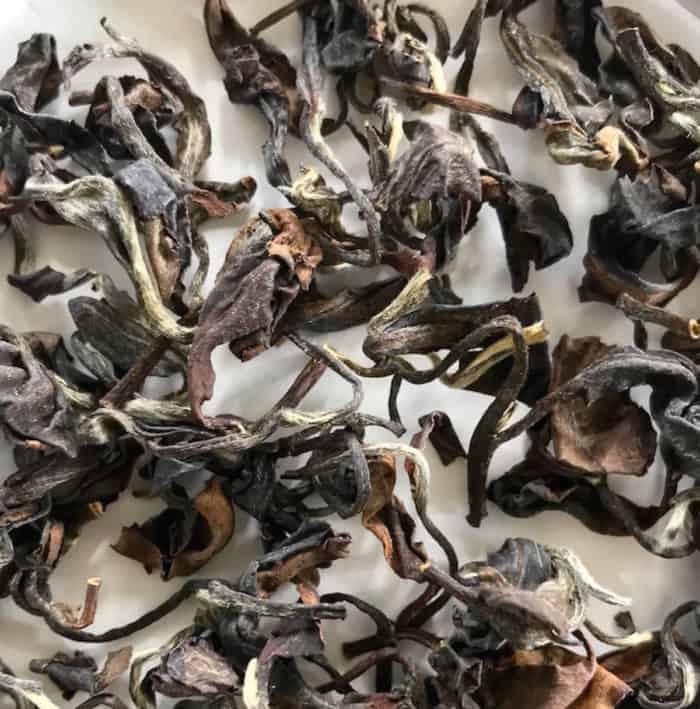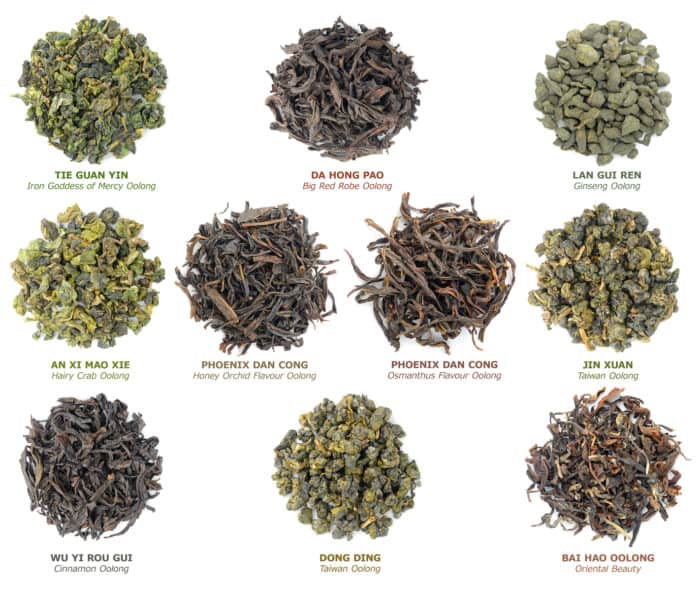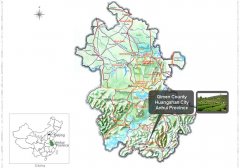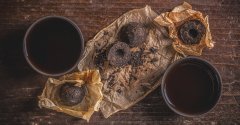What are the three major oolong teas in China? what are the famous varieties and brands of oolong tea?
What is oolong tea?
Do you think I said something wrong? Black tea and green tea have a completely different appearance, while dragon tea looks like black tea as well as green tea.
In China, tea is divided into six categories according to processing methods; this classification is globally recognized. Oolong tea is a separate category, also known as partially fermented tea. Oolong tea has many subtypes, and its fermentation degree and processing technology are also different. Some are like green tea, some are like black tea, and some are like black tea. As you can see, the taste of oolong tea varies greatly from one kind to another, which is rare in other types of tea.

Source of the name
To understand one thing, we usually start with its name.
Oolong tea means a huge black dragon in Chinese because its leaves are black and curly. Another theory is that it takes a similar sound to the Chinese name of the tea maker who makes oolong tea.
The most famous legend is that oolong tea originated from an interesting story. A long time ago in Fujian, when a lazy tea maker was processing green tea, he randomly put the tea on the ground and crushed it.
The tea maker didn't notice and went to bed. When he woke up, the leaves turned black and looked like a dragon; he was afraid. Others learned the truth and laughed at him, saying that he drank "oolong tea" which is "oolong tea". In the local language, Oolong means misunderstood, similar to the oolong ball in football.
History
According to historical records, the embryonic form of oolong tea appeared in the Song Dynasty (about 1000 years ago). At that time, the tea industry in Fujian was very developed, and group tea (a compressed green tea) was listed as a tribute for royal consumption. Due to the backward production capacity, many leaves are broken and fermented in the processing process. They cannot be dedicated to the royal family, but can only be enjoyed by the tea maker himself.
Later, the tea maker found that if the tea was broken under certain conditions, it could be processed into tea with a unique flavor. After a long period of research and optimization, the processing method of oolong tea was finally invented.
According to historical records, oolong tea was invented by Anxi (Minnan people) in 1725. It tastes delicious, and people in northern Fujian soon began to produce oolong tea. Later, as a port city, Fujian also spread the planting and processing methods of oolong tea to places far away from the mainland, such as Taiwan.
Production process of Oolong Tea
The processing process of each oolong tea is similar; some of them repeat some steps, but the operation is slightly different. The picked tea should be processed into crude tea after withering, killing cyanine, static re-moistening, kneading, unblocking, drying and so on. Among them, shaking tea is the most important step to create the unique flavor of oolong tea, which is the result of long-term research by tea makers.
Kneading and twisting means that the tea maker puts the tea in a huge bamboo screen and keeps kneading and twisting it to make the tea knead and crush each other. In this way, the edge of the leaf will break, and the juice will flow out, cover the surface of the leaf, and be oxidized. After shaking, the leaf will be placed and the water will flow back to the body through the vein, making it soft again.

If you pay attention to the leaves of oolong tea after brewing, you will find that the edges are obviously red; this is the so-called "red-edged green leaves". Therefore, oolong tea is also called partially fermented tea.
As a result of friction and oxidation, the temperature of the blade rises in the process, leading to a dramatic change in internal matter. The taste of every kind of oolong tea is the basis of this moment. Senior tea makers will determine the appropriate frequency and intensity of shaking tea according to the weight and smell of tea.
The main producing areas of oolong tea
According to the origin, oolong tea can be divided into several small pies. Although there are many places in the world where oolong tea is produced, Fujian is undoubtedly the most authentic and has the largest output. There are hundreds of tall tea trees here; they are all suitable for producing high-quality oolong tea with different tastes. As a pillar industry, local tea makers have been committed to research and cultivation in order to produce better tea.
[southern Fujian]
Southern Fujian, also known as Minnan, is the birthplace of oolong tea. There are four kinds of excellent tea trees: Tieguanyin, Huangdan, Benshan and Maoye. Tieguanyin is probably the most famous and probably the first oolong tea that many people have tried. The fermentation degree of Minnan oolong tea is low, the leaf color is still green, and the brewing color is light. The aroma is fresh, mainly floral, elegant and long-lasting.

[northern Fujian]
Northern Fujian is also known as northern Fujian; Wuyi Mountain is the most famous producing area. The source leaves here mainly come from Dahongpao, Narcissus, Rou Gui, Qi Zhong and the four Mingcong (Tieluohan, Bai Jiguan, Shuijingui, Sakata Yao). Wuyi rock tea is the representative of oolong tea in northern Fujian, with unique roasting and mineral flavor, called "rock fragrance". Different from Minnan oolong tea, the granule of Wuyi oolong tea is dark and amber, with not only flower and fruit aroma, but also strong aroma of traditional Chinese medicine.
[Taiwan]
Taiwan also has a rich oolong tea culture, and a quality contest of oolong tea is held every year. Taiwan tea trees and processing methods are from Fujian; after years of optimization and improvement, they have created excellent local characteristics. Most of the time, tea makers in Taiwan like to roll tea into balls, the so-called "seed tea." In addition, Taiwan tea gardens have the advantage of high altitude; everyone knows that high mountain tea is more nutritious than low mountain tea.
[Guangdong]
Guangdong's oolong tea is mainly produced in Chaoshan area. This is also the birthplace of the kung fu tea ceremony; making oolong tea by Kungfu Tea's method can improve the flavor of oolong tea. Chaoshan oolong tea is famous for its pungent aroma. They are also classified according to the type of aroma; one of them has an interesting name-duck shit green.
[other regions]
Japan, South Korea, India and Malaysia also produce oolong tea, but the output is further away from China.
Important Notice :
前街咖啡 FrontStreet Coffee has moved to new addredd:
FrontStreet Coffee Address: 315,Donghua East Road,GuangZhou
Tel:020 38364473
- Prev

Where is the origin of Keemun Black Tea, the three authentic black tea in China? the efficacy and function of Keemun Black Tea in Anhui Province
Keemun Black Tea is one of the top ten famous teas in China, which is really a pleasant surprise. Keemun Black Tea, also known as Qimen Kungfu Tea or Qimen Kungfu Tea, varies from dialect to dialect. Keemun Black Tea is famous for its rich aroma, mellow taste, beautiful aesthetic value and bright red juice after brewing. Keemun Black Tea is one of the top ten famous teas in China. It is indeed a beautiful tea. It is also known as Qimen
- Next

Introduction to the differences of Ten Pu'er Tea Brands in Yunnan Pu'er Tea producing areas
Yunnan Province of China is the birthplace and production place of Pu'er tea. Yunnan Province is famous for its fragrant Yunnan black tea. Due to the ideal growth conditions of tea in Yunnan, tea has been planted and produced there for hundreds of years. Yunnan is usually regarded as the tea mecca of China. Yunnan tea, such as Pu'er tea, is famous for its weight loss health, but now they are becoming more and more famous all over the world.
Related
- What effect does Italian American coffee with filter paper have? Will coffee taste better if it is put on filter paper at the bottom of the powder bowl?
- What is the color difference in coffee beans? What are the characteristics of honey processed coffee beans? Why are the anaerobically treated coffee beans uneven in color?
- How does novice Xiaobai quickly get started and make coffee? Newbies learn to make coffee by hand and share the specific steps and process process!
- Costa tea has a shelf life of 100 years?! Expert: Unable to verify
- It's a huge uproar! American milk addition was rejected by Manner employees?!
- Mocha pot coffee bean recommendations| How fine and how much powder should be used for grinding? What parameter ratios do I need to use to make milk with Mocha pot coffee?
- What are the characteristics of the world's top ten coffee beans treated with Costa Rica honey? How to make black honey kadura from Tarazhu Pilon Processing Plant taste good?
- How to make deep-roasted coffee? What grinding water temperature does authentic Jamaica Blue Mountain No. 1 coffee use to brew it well?
- Selected high-grade rose summer coffee flavor tasting guide Why Panama rose summer has the aroma of flowers and fruits
- What equipment does a novice Xiaobai need to buy to learn to make coffee? Filter cup electronic scale bean grinder manual flushing pot purchase guide

